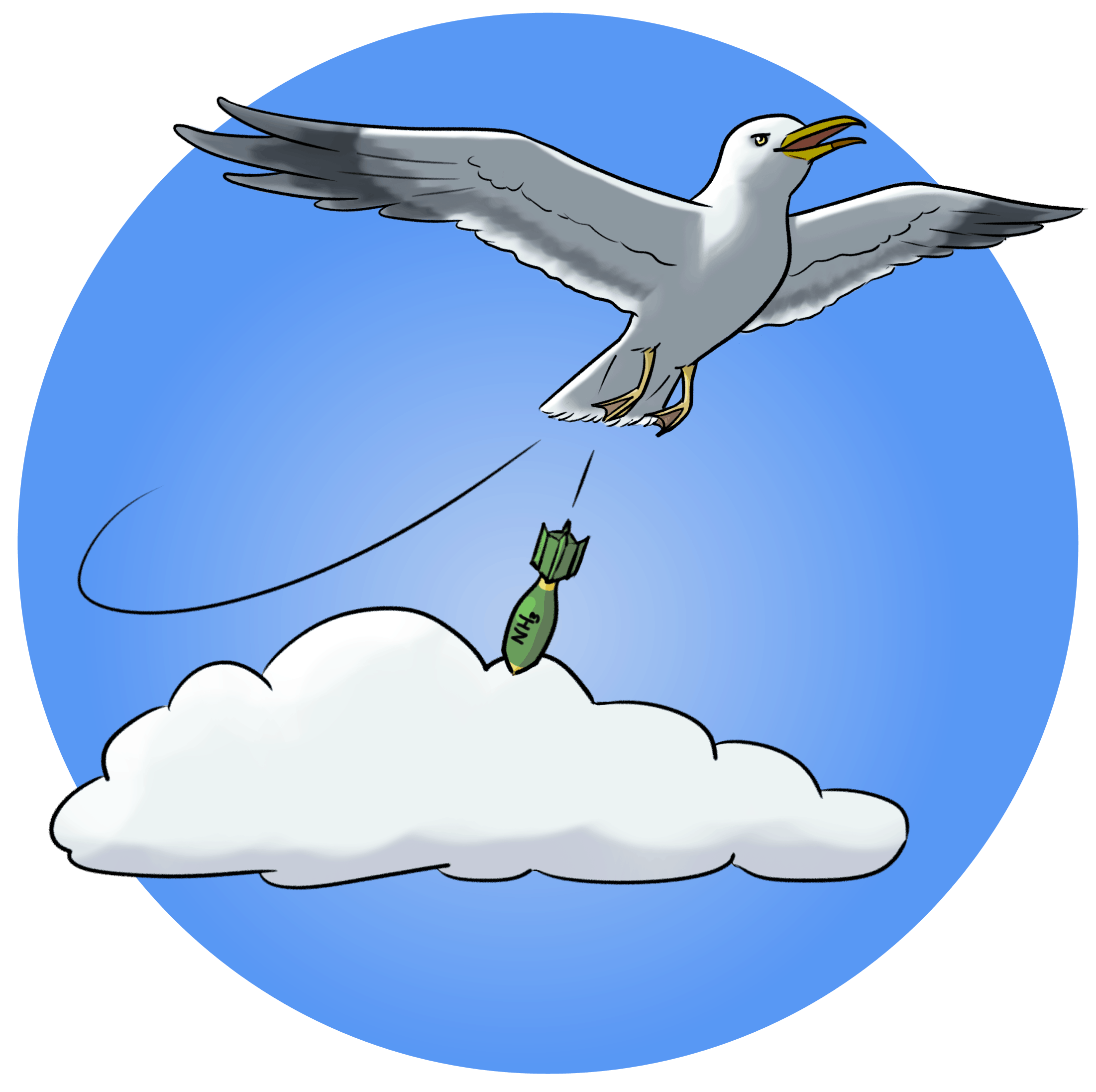As summer arrives in the North Pole, hundreds of sea-dwelling bird species from across the globe make the lengthy journey to the Arctic to clamour over their share of a summer-only, one-of-a-kind food haul. Teeming Arctic waters provide the birds with an ultra-rich nutrient source, for which they are willing to forgo their warmer hometowns.
Although this migration pattern has been well-documented by ecologists, it only recently caught the attention of a different sort of scientist: environmental chemists. Environmental chemists differ from ecologists in that they focus on the chemistry of an ecosystem rather than interactions between organisms in their natural habitats.
Dr. Jennifer Murphy of the Chemistry Department at U of T, along with former graduate student Greg Wentworth boarded the Amundsen, a Canadian coast guard ship, in July 2014 and sailed through the Nunavut archipelago towards the east Arctic sea to study this phenomenon from a fresh angle.
In addition to having 40 crew members, the ship also carried 40 researchers in oceanography and atmospheric science from various domestic and international universities, as well as government-affiliated institutions.
The trip was funded by The Climate Change and Atmospheric Research program at the Natural Sciences and Engineering Research Council of Canada through NETCARE, a network consisting of Canadian universities, international universities, and partner institutes aiming to study remote Canadian environments. The program is led by Dr. Jonathan Abbatt, an Environmental Chemist at U of T.
The team’s hypothesis links animal behaviour and atmospheric chemistry. The migrating seabirds are thought to actively shape the Arctic atmosphere in unexpected ways. These massive swarms of birds, who settle on Arctic shores to mate, nest, and feed, collectively produce copious amounts of waste known as ‘guano.’
Due to a diet mainly composed of marine animals, which are known to be rich in nitrogen, the birds’ guano becomes saturated with a nitrogen compound known as ‘urea’, which humans also release in their urine. The birds’ urea is then degraded by urea-feeding bacteria in the presence of water, and ammonia gas is released.
Ammonia gas has long been studied by environmental scientists for its major contribution to cloud formation. As Murphy describes it, the ammonia particles act as glue, holding molecules of sulphuric acid in the atmosphere together.
In turn, sulphuric acid acts as a seeding surface for water to collect and condense. The more particles present, the more water molecules make up the cloud. When the particles are well spread out, the cloud appears brighter.
Clouds play a crucial part in maintaining the Earth’s temperature. Water in clouds absorbs radiation from the sun and reflects light away from the ground with the help of trapped molecules like ammonia and sulphuric acid. Murphy explains that this process has an overall cooling effect, and the brighter the cloud, the stronger the cooling effect will be.
The Murphy group sought to find out whether ammonia released by birds can impact the composition of the Arctic atmosphere. The team collected Arctic air samples which were scrubbed to remove water. The residual molecules were analyzed using a technique known as ‘ion chromatography’ to characterize the compounds present in the samples and quantify potential cloud forming particles in them as well.
This was carried out over the span of six months, from April to October. The team compared their measurements with model-produced predictions that either accounted for or did not account for seabird-induced ammonia emissions.
The group found that their measurements better fit the data derived from the first model during the six month period. This model considered — among other factors — emission per bird, the population of present birds, and migration patterns.
It is hard to believe that gas released from a few million birds can alter the atmosphere of an area nearly five times the size of Canada. This, however, is possible because of the peculiar wind patterns in the North Pole.
In the summer the when seabirds migrate, the Arctic becomes almost completely isolated from air circulation at lower latitudes, creating, as Murphy described it, an incredibly “pristine” and still atmosphere, untainted by pollution from bustling hubs closer to the equator. Thanks to this, minor emissions can have a colossal impact.
Interestingly, a similar phenomenon could be taking place in the South Pole, where preliminary measurements have revealed an elevated rate of particle formation “downwind of penguin colonies,” according to Murphy.
The findings draw attention to the fact that, once again, nature has been proven to possess a formidable level of intricacy in its operations, and it demands respect from its most discourteous guests: humans.


